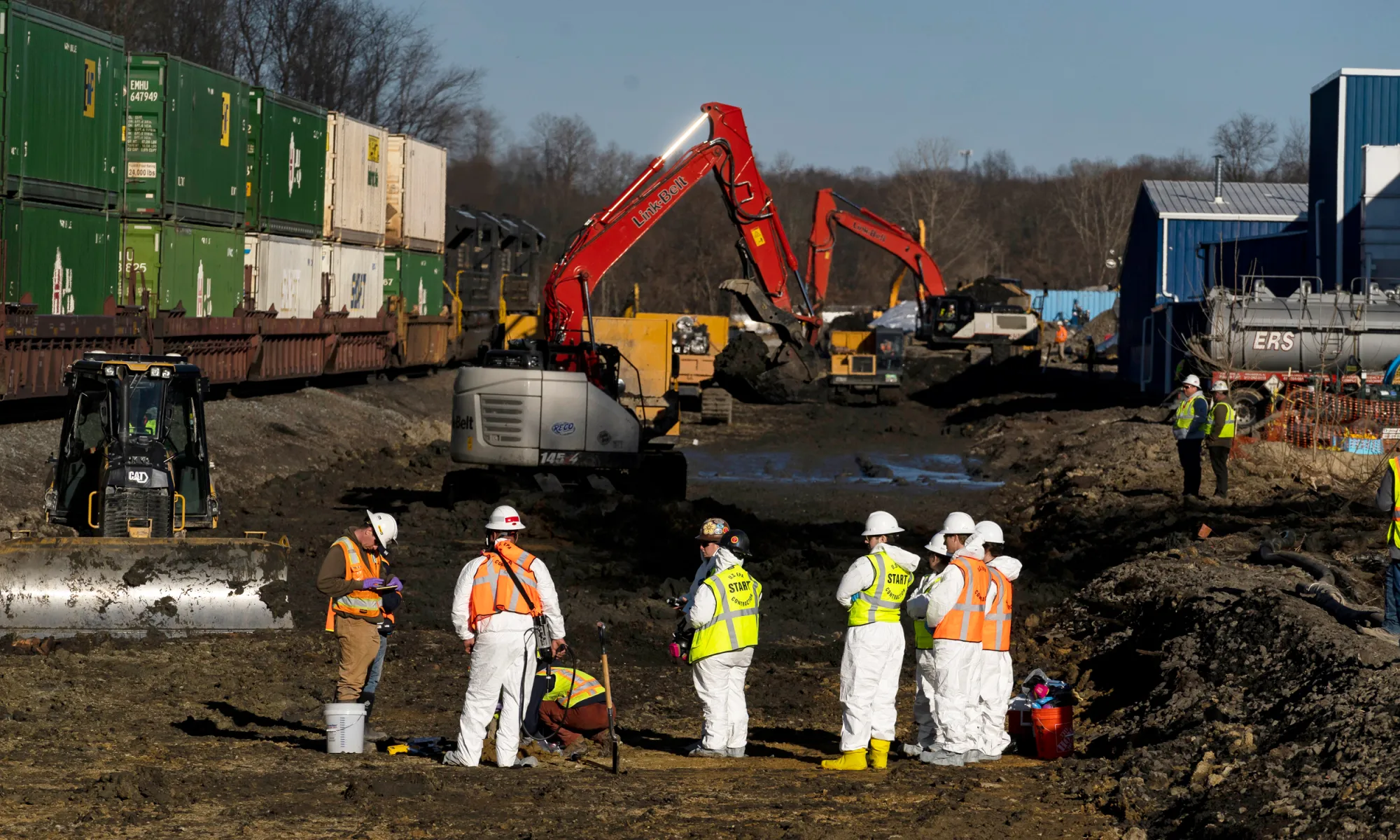Accountability
EPA pressured for transparency after Ohio derailment

The Environmental Protection Agency have said that levels of cancer-causing chemicals called dioxins in East Palestine, Ohio, are “similar to typical background levels” after a train derailment and chemical burn last month, but it has yet to publicly share specific data about the potent toxic compounds in the soil.
The gap between statements from the EPA and data shared with the public has resulted in frustration for some East Palestine residents as the EPA attempts to gain community trust and reassure residents concerned about the potent toxins.
“As far as dioxins go, this testing isn’t coming fast enough,” said Jami Wallace, of East Palestine, a community organizer with River Valley Organizing. “We need transparency, or people are going to assume.”
The EPA has said “final results” will be available in the “coming weeks,” according to updates from its incident response center. The agency held a community meeting Thursday in part to discuss questions about soil sampling and its preliminary findings.
Environmental groups have criticized how the EPA has communicated about dioxins and say the agency needs to do more to substantiate its claims to earn community trust.
“I find it outrageous that EPA makes statements like this without providing any data to support it. There is no transparency in this process at all,” Stephen Lester, a toxicologist and the science director of the Center for Health, Environment & Justice, an advocacy group based in Virginia, said in an email.
Dioxins are toxic chemicals known to cause cancer, disrupt the immune system and cause reproductive issues. They have been at the center of notorious environmental cleanups from Times Beach, Missouri, to Love Canal, New York, to “Mount Dioxin” in Pensacola, Florida.
Dioxins can be created in poorly controlled fires where chlorine is available. Because five of the derailed cars in East Palestine contained vinyl chloride, experts think it’s possible that the cloud of smoke released by the chemical fire could have contained dioxins.
Sampling and testing for dioxins is expensive, and it can be a lengthy process. Because dioxins are so toxic, laboratories must be able to detect tiny amounts of them.
Terry A. Hurlbut has been a student of politics, philosophy, and science for more than 35 years. He is a graduate of Yale College and has served as a physician-level laboratory administrator in a 250-bed community hospital. He also is a serious student of the Bible, is conversant in its two primary original languages, and has followed the creation-science movement closely since 1993.
-

 Civilization1 day ago
Civilization1 day agoDC Pipe Bomb Arrest Raises Questions About Christopher’s Wray’s FBI
-

 Executive4 days ago
Executive4 days agoThe Last Supper: New York’s Socialist Feast
-

 Civilization4 days ago
Civilization4 days agoYoo Hoo, VP Vance—Your Character is Showing!
-

 Guest Columns3 days ago
Guest Columns3 days agoCongressional Leaders See Far Higher Stock Returns Than Peers
-

 Civilization2 days ago
Civilization2 days agoThe Legal Logic Behind U.S. Operations Against Narco-Terrorist Networks
-

 Civilization4 days ago
Civilization4 days agoFacing Facts & Rolling Back Mythologies: The New National Security Strategy
-

 Civilization3 days ago
Civilization3 days agoHow Trump Changed America
-

 Civilization5 days ago
Civilization5 days agoWaste of the Day: Senators Earmarked Cash for Their Former Schools


